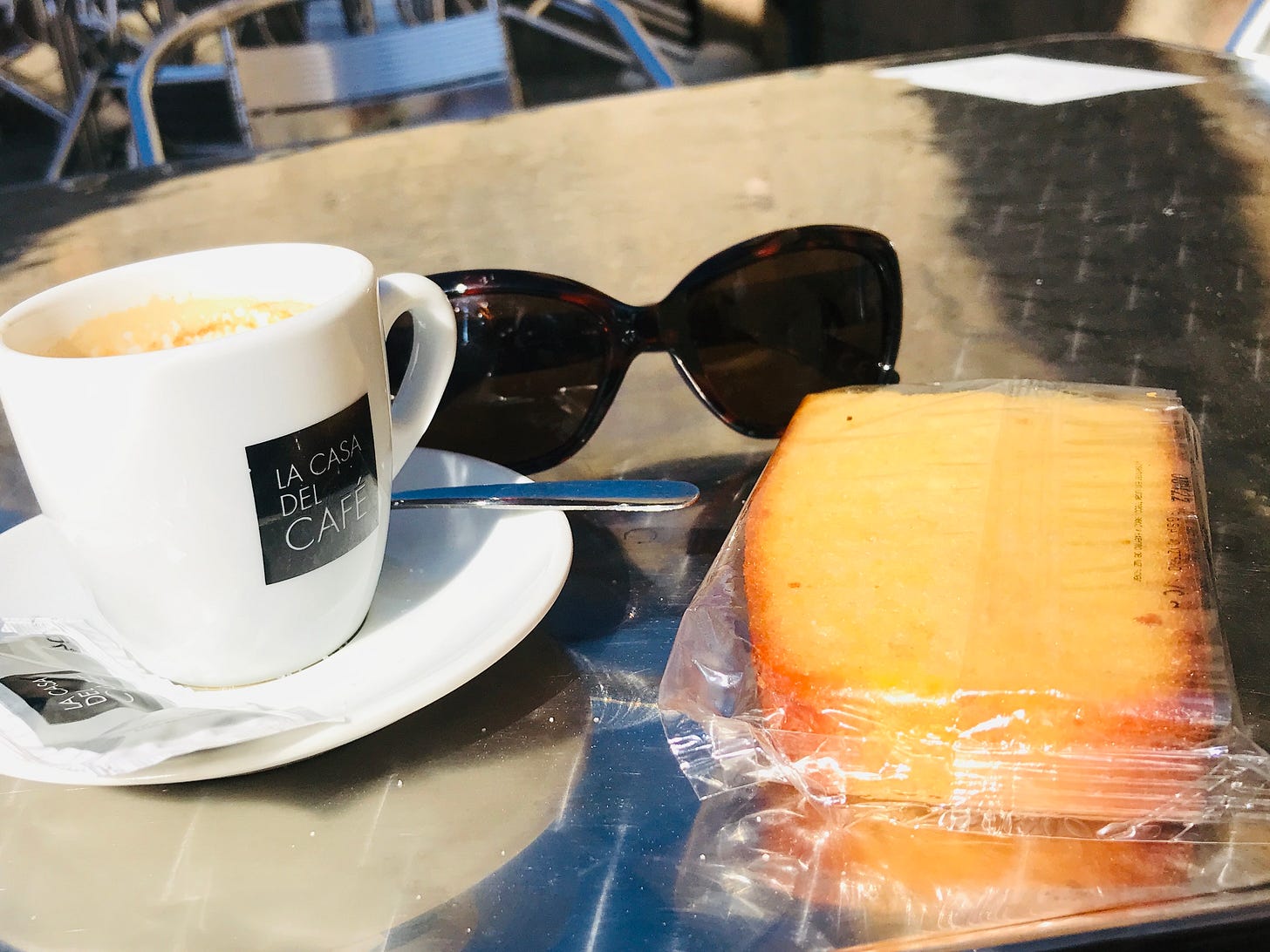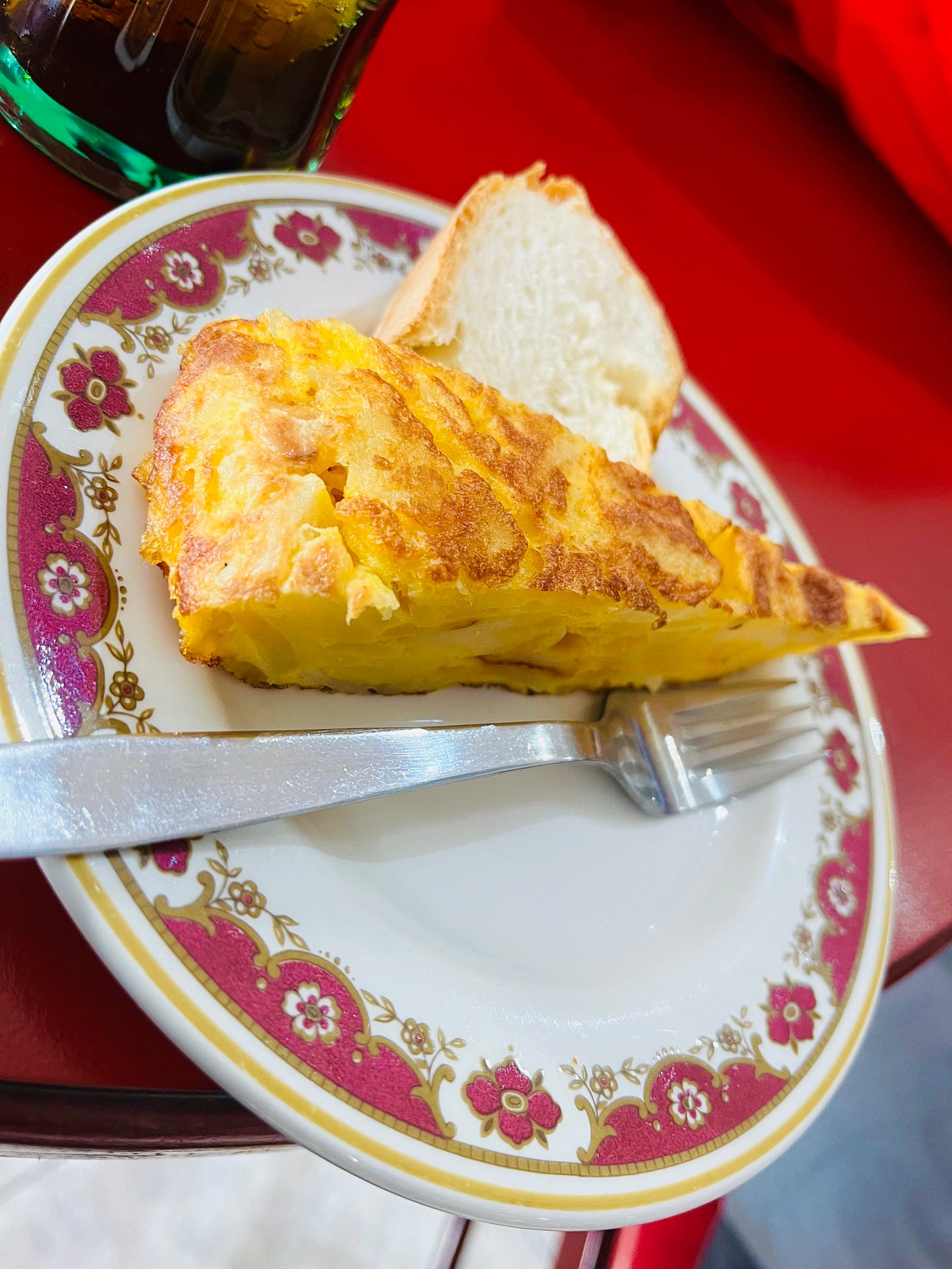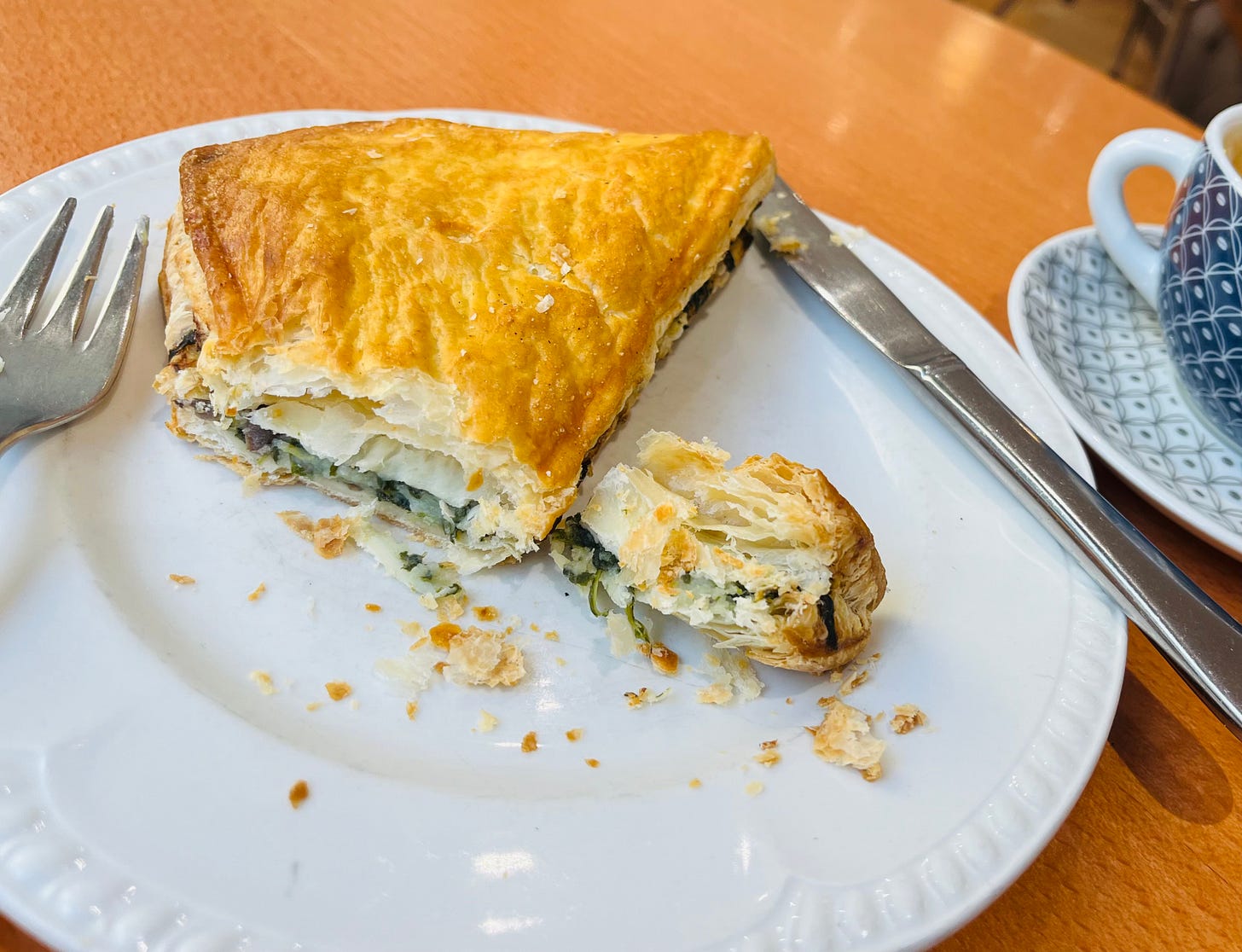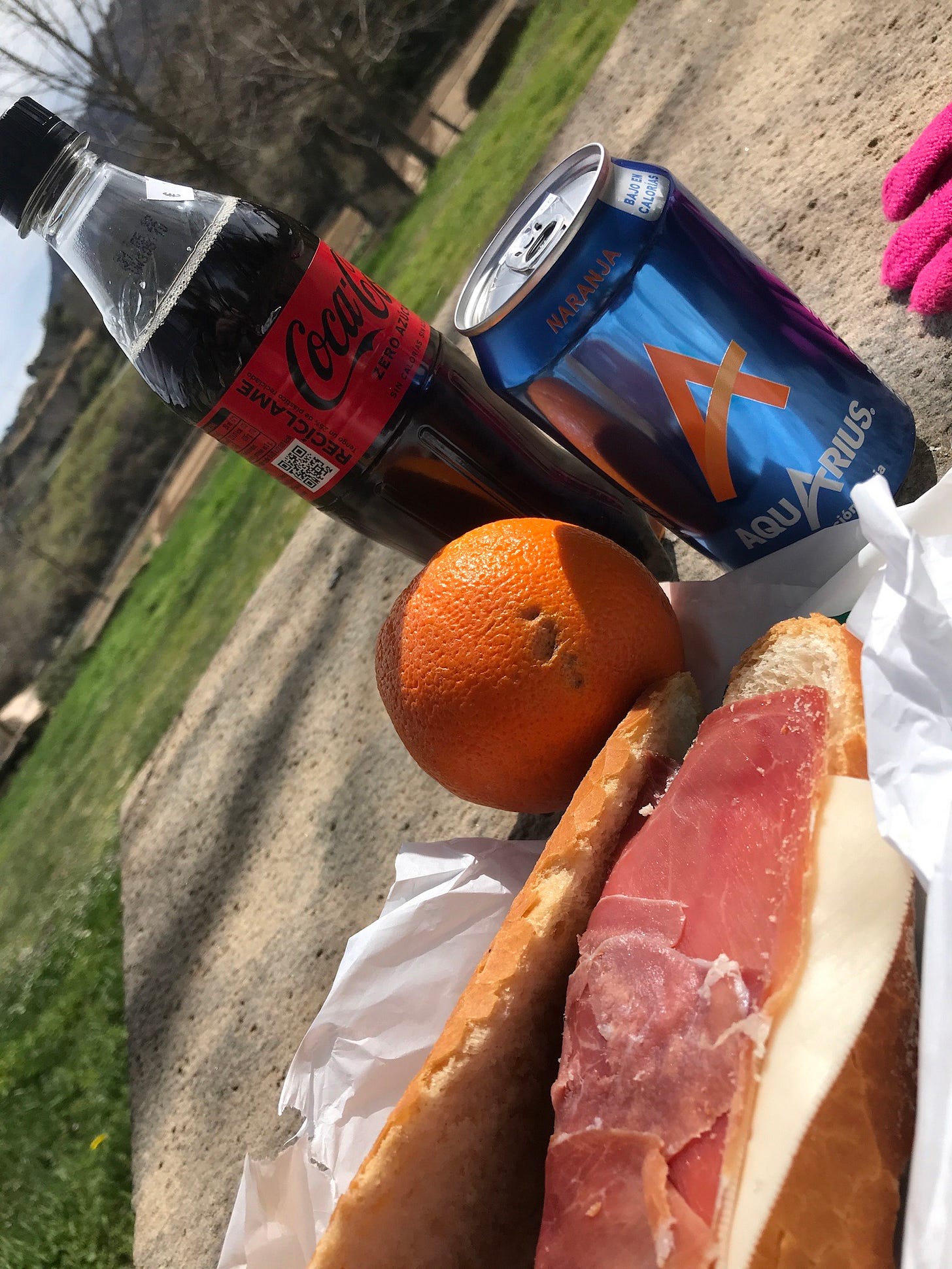Part 2: Spanish Food for Beginners
What to try when visiting Spain, or when hiking the Camino de Santiago. A five-minute read.
We are in the middle of Winter Solstice season, when we welcome back light after the longest night of the year.
If you’re celebrating the holidays, I hope you’re having a great time!
If you’re not celebrating, I hope you’re enjoying that special end-of-year vibe that lends itself so well to reflection and decluttering. And eating hearty stews and full-bodied soups.
Here’s part two of my series on Spanish food for beginners. Read part one here.
Navajas al Ajillo

I had navajas al ajillo or razor clams in garlic in the coastal town of Muxia. It was the dinner I had on the night I arrived in town, after a hair-raising solo hike in pitch black darkness on a deserted freeway cutting through an eerie forest.
I will always and forever associate razor clams with relief and gratitude for getting through that experience. Dip your bread in the garlic- and parsley-infused olive oil, top the bread with the clam meat, and know that you are indeed blessed and protected by your guardian angels, God, and the Universe.
Café Solo
I love coffee, but sometimes all I need is the exact amount and consistency of a café solo, Spain’s version of espresso. There’s no need to linger over a café solo. The point is to shoot it and go, energized for… maybe another five more miles of hiking?
Of course, you can order a café solo doble (a double shot), or a café cortado (with a splash of milk), but for sheer speed, convenience and pure, unadulterated coffee flavor, I love my café solo shots.
Bizcocho
Spanish sponge cake. It’s great for breakfast or whenever you just feel like having something sweet but not too elaborate or heavy. It’s perfect with coffee. I’ll take this over Tarta de Santiago, anytime.
Café con Leche


The ubiquitous Spanish coffee drink. Literally, coffee with milk, this is often the default option. You approach the counter in the morning and they ask: “Café con leche?” and all you need say is si or no.
Café con leche is almost but not quite like a cappuccino. There’s a lot of milk, but not as deliberately foamy as cappuccino. Depending on where you are, you may or may not have non-dairy milk like leche de soja (soy milk) or leche sin lactosa (lactose free milk).
Tortilla Española
Not to be mistaken for the Mexican tortilla. The Spanish tortilla is as ubiquitous as café con leche. It’s an appetizer, breakfast, lunch, snack or dinner. It’s a thick egg and potato omelette, sliced in wedges. It looks like, but is not, a frittata.
This might be Spain’s national food. I’ve heard Spaniards discuss how horrible a dry tortilla is, and wax poetic about the perfectly done tortilla, which is, apparently, moist but not runny.
I haven’t quite gotten to being a tortilla Española connoisseur yet. But I do appreciate its versatility as an anytime food, and as the perfect bite of carb and protein.
Pulpo a la Mugardesa

This was my celebratory dish, the one I ordered after claiming my compostela (certificate of completion) for walking the Camino de Santiago for the second time, via the Camino Inglés (The English Way), a 75-mile, six-day hike from Ferrol to Santiago de Compostela.
Where do I even begin? First, pulpo (octopus) is a must-try when in Spain. Second, there are many recipes that use pulpo. A la Mugardesa is a hearty, paprika-flavored stew with potatoes, onion and peppers.
The octopus absorbs this rich sauce but also retains its tenderness and distinct seafood flavor. It is one of my most memorable meals, ever.
Empanada
Empanada are pastry filled with meat, seafood, usually tuna, sometimes spinach and cheese. Often, they are hand pies, but I’ve also had them cut into squares from a sheet of tuna or meat covered with pie pastry.
I’ve had some really good ones, and some really regrettable ones. Whichever way, it’s a quick and convenient snack, with just the right ratio of carb to protein, when a traditional bocadillo (sandwich) just seems too heavy.
Jamon

Jamon, or ham. I don’t know why this isn’t the Spanish national dish. It should be. After all, they have Museo de Jamon (Museum of Ham) and Jamon Experience tastings.
One of my favorite hacks is going to a grocery to get a package of jamon and bread. The grocery staff will slice the bread and make the bocadillo (sandwich) for you para llevar (to go). That’s how to do fast food in rural Spain.
There’s one jamon variant that I am not into. Jamon York is like packaged sweet ham from Target or Safeway, but with a wilted, stale look and flavor to it. Whether low-end or high-end Iberico or Serrano, in my humble opinion, it’s still going to taste way better than jamon York.
I hope this encourages you to try some new food or cuisine, whether domestically or abroad. Now, as adventurous as I am with my food choices, I’ll end with one caveat: there are certain destinations where I am more cautious.
In some countries, I avoid raw food, street food, fresh juices or smoothies, tap water and the like. Do your research before deciding to be a culinary daredevil abroad. It only takes one bout with traveler’s diarrhea to learn.
And on that oh-so-appetizing note, I wish you many great new food experiences, and a glorious Winter Solstice season!
I offer a free consultation for beginners to the Camino de Santiago. Whether you’re still thinking of possibly walking your first Camino, or are already committed to doing it but need to know how to get started, e-mail me at contact@beginnersmind.life for your free consultation. Or maybe you’re thinking of being a solo traveller? E-mail me your questions!












